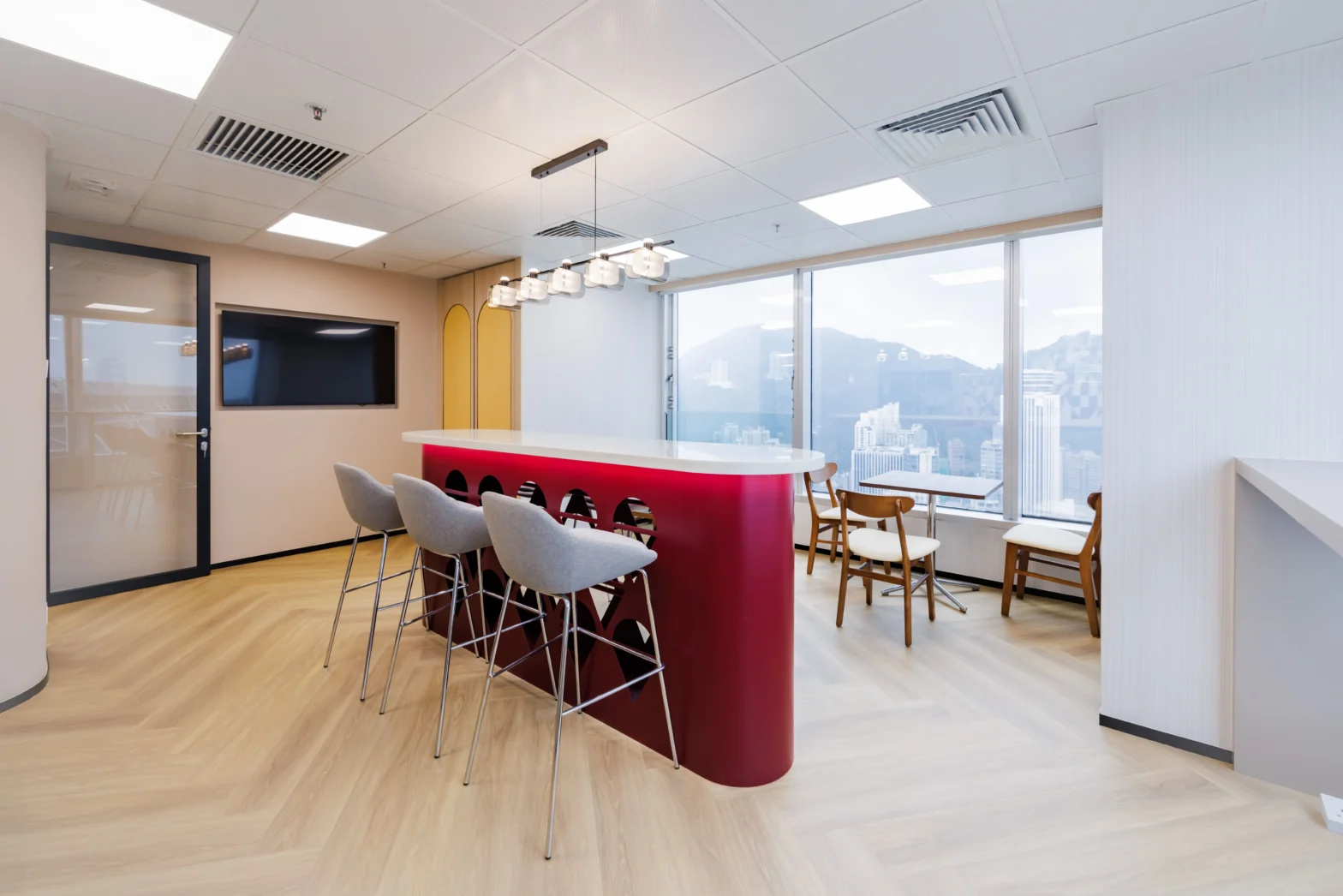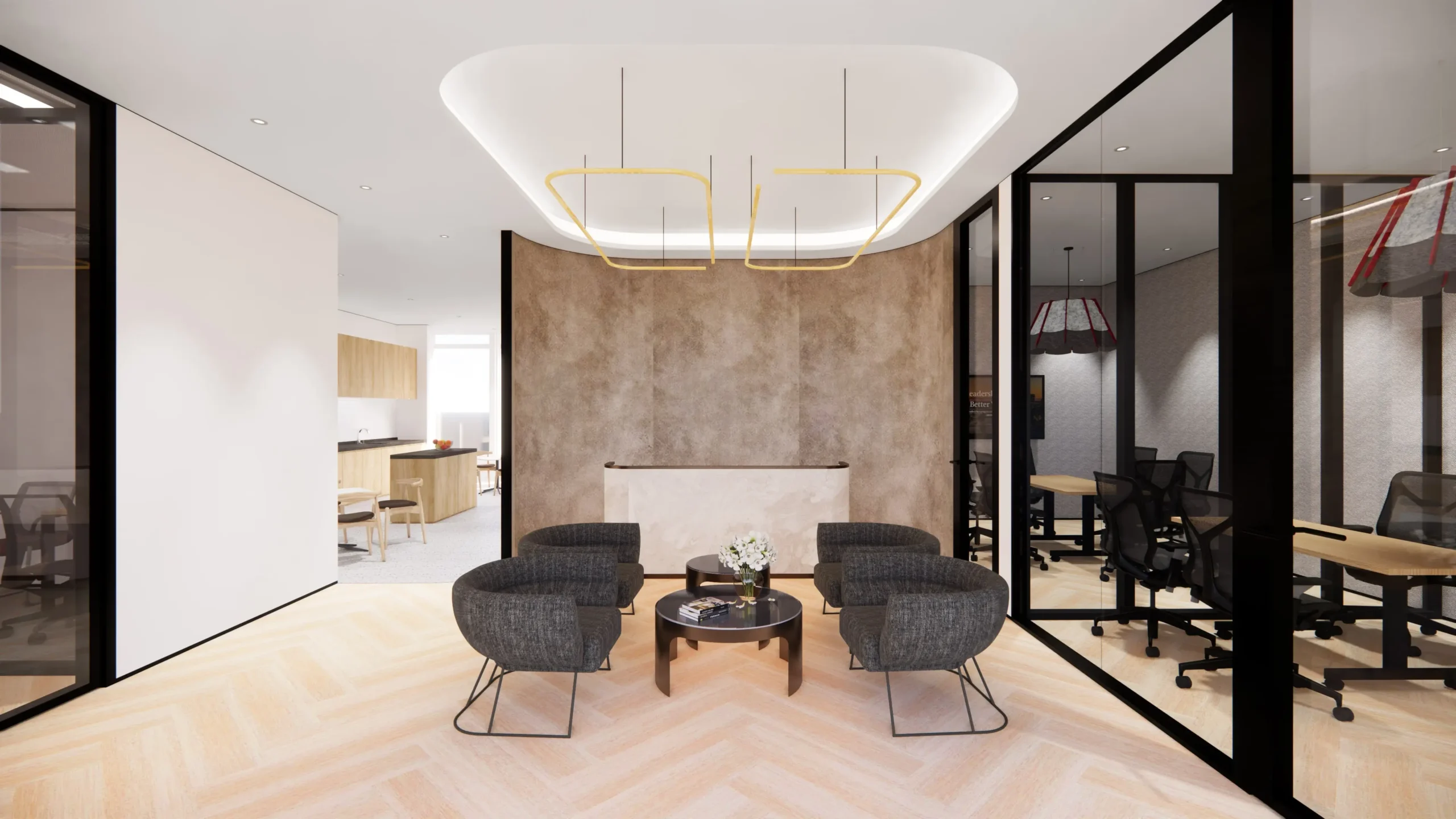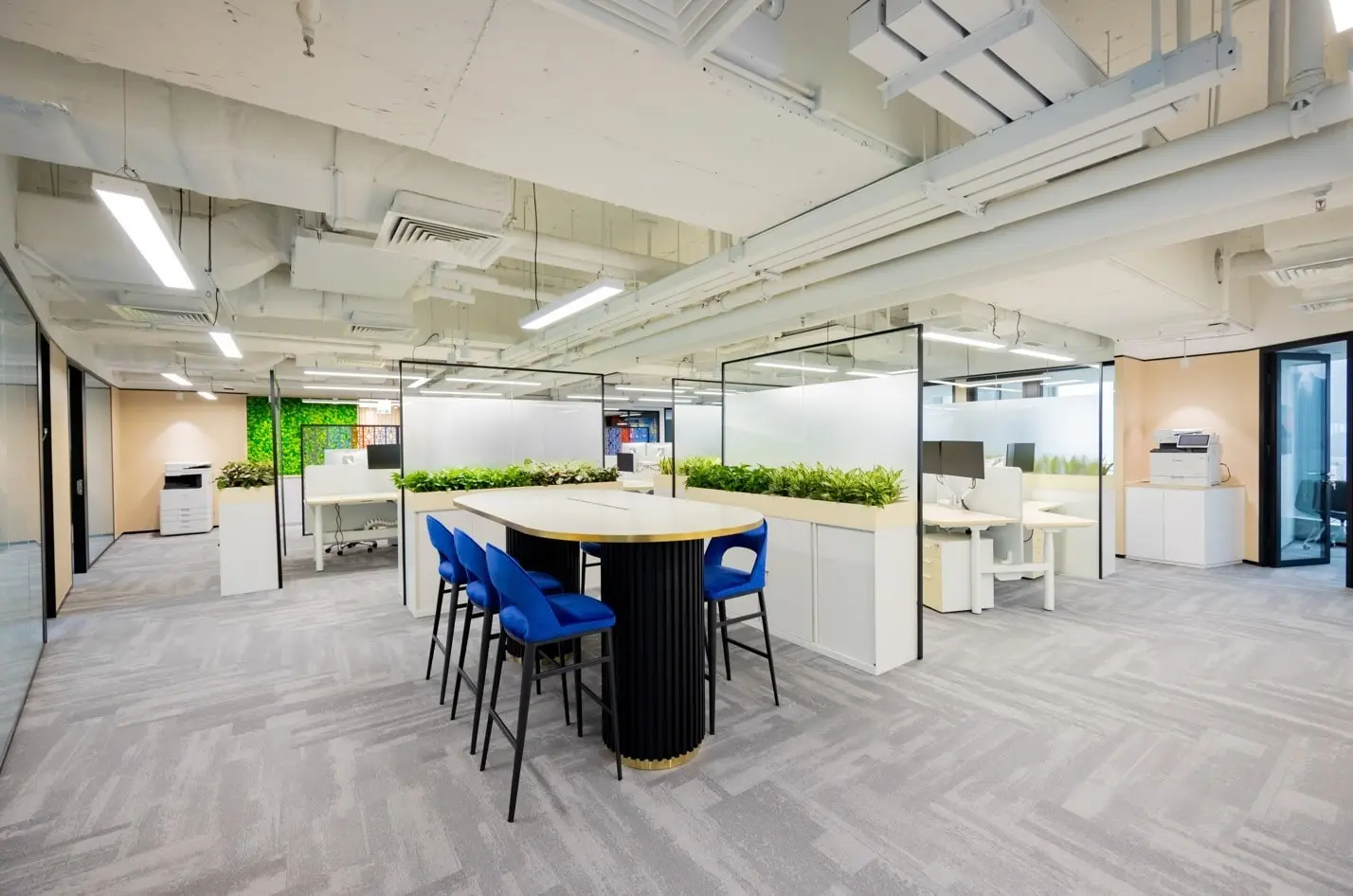Types of Office Interior Design

Office interior design comprises various styles including modern, traditional, industrial, and minimalist designs. Each style caters to different needs and preferences.
Creating an attractive and functional workspace is essential for boosting productivity and the overall well-being of employees. By selecting the right office interior design style, companies can establish a conducive environment that fosters creativity, collaboration, and efficiency. It is important to consider factors such as lighting, layout, furniture, and color schemes when planning the Office Interior Design/ interior design of an office.
Understanding the different types of office interior design styles can help companies create a workspace that aligns with their brand identity and values.
Traditional Office Design
When it comes to office interior design, the traditional style holds a timeless appeal. It exudes a sense of formality, structure, and sophistication, making it a popular choice for businesses with a more conservative approach. Let’s delve into the key characteristics of the traditional office design, exploring its classic style and formal layout.
Classic Style
The classic style of traditional office design / Office Interior Design embodies elegance and timelessness. It features rich, dark wood furnishings, intricate detailing, and ornate decorations, creating an atmosphere of refinement and prestige.
The use of traditional elements such as mahogany desks, leather chairs, and antique-inspired accents adds a touch of warmth and luxury to the workspace, making a lasting impression on clients and visitors.
Formal Layout
The formal layout of a traditional office design emphasizes a sense of order and hierarchy. This layout typically includes separate spaces for individual offices, designated meeting areas, and a central reception or waiting area.
The furniture arrangement follows a symmetrical pattern, with a focus on creating a balanced and organized environment. The overall design exudes professionalism and fosters a conducive atmosphere for focused work and client interactions.
Modern Office Design
Modern office design focuses on creating functional and aesthetically pleasing work environments that cater to the needs of today’s workforce.
Contemporary Aesthetics
Modern office design incorporates sleek lines, minimalist furniture, and neutral color palettes to create a clean and sophisticated look.
Open Floor Plan
An open floor plan promotes collaboration, creativity, and flexibility within the workspace by removing physical barriers between team members.
Creative Office Design
Creative Office Design: Embracing creativity in the workplace is essential for fostering innovation and productivity. Creative office design focuses on inspiring spaces and flexible furniture to enhance the overall work environment.
Inspiring Spaces:
Designing office spaces that stimulate creativity is crucial for employee morale and performance.
- Bright colors and natural light can uplift moods and boost productivity.
- Unique artwork and inspirational quotes can motivate employees.
Flexible Furniture:
Adaptable furniture plays a vital role in promoting collaboration and comfort in the office setting.
- Modular desks and chairs enable flexibility for various work setups.
- Movable partitions allow for easy reconfiguration of space based on evolving needs.
Minimalist Office Design
Minimalist office design revolves around the fundamental principles of simplicity, functionality, and clean lines. It seeks to create a clutter-free and streamlined workspace that promotes focus, productivity, and a sense of calm.
Embracing the notion that less is more, minimalist design minimizes distractions, emphasizes essential elements, and cultivates an environment of purposeful efficiency.
Simplicity And Functionality
Minimalist office design is characterized by its emphasis on simplicity and functionality. It aims to create a workspace that is free from unnecessary adornments and clutter, focusing instead on delivering a clean and uncluttered environment that enables efficient workflow.
By prioritizing functionality, minimalist design ensures that every element within the office serves a practical purpose, promoting productivity and a sense of order.
Clean Lines
The concept of clean lines is integral to minimalist office design. It entails the use of sleek, straight lines and geometric shapes to establish a visually harmonious and uncluttered aesthetic.
Clean lines contribute to a sense of precision and order within the office space, promoting a serene and streamlined atmosphere that supports optimal focus and productivity.
Industrial Office Design | Office Interior Design
The industrial office design is a modern and trendy style that has gained popularity in recent years. It combines elements of industrial architecture with contemporary aesthetics, creating a unique and edgy workspace.
The industrial office design is characterized by its use of raw materials, exposed brick and pipes, and sleek minimalism.
Exposed Brick And Pipes
The use of exposed brick and pipes is one of the defining features of industrial office design. Exposed brick walls add a rustic and raw element to the space, while exposed pipes give a sense of authenticity and industrial charm. These elements not only create visual interest but also add texture and character to the office environment.
Raw Materials
Raw materials play a crucial role in industrial office design. Materials such as concrete, steel, and wood are commonly used to create an industrial look and feel. Concrete floors or polished concrete countertops are popular choices for an industrial office design.
Steel accents, such as metal shelving or exposed structural elements, add an industrial touch. Wooden furniture or reclaimed wood features can soften the overall look and bring warmth to the space.
Industrial office design values simplicity and functionality, so it is important to choose furniture and decor that align with these principles. Keep in mind that the overall aesthetic should be clean, minimalistic, and purposeful.
When it comes to color schemes, industrial office design tends to favor neutral tones. Natural colors like grey, black, white, and earthy tones can create a harmonious and sophisticated atmosphere. The use of bold or vibrant accents, such as red, can add a pop of color and create visual interest within the space.
In conclusion, an industrial office design combines the raw appeal of industrial architecture with sleek contemporary elements. Exposed brick and pipes, along with the use of raw materials, are key features that give the space its unique charm.
When designing an industrial office, aim for simplicity, functionality, and a harmonious color scheme to create a stylish and inspiring workspace.
Biophilic Office Design
Biophilic office design is a concept that aims to bring the beauty and benefits of nature into the workplace. By incorporating natural elements and elements inspired by nature, biophilic office design creates a rejuvenating and productive work environment.
One popular aspect of biophilic design is the use of green walls, which not only add a touch of nature but also have numerous health and environmental benefits.
Incorporating Nature
One of the key principles of biophilic office design is the incorporation of nature into the workspace. This can involve bringing in plants, having large windows to let in natural light, and using natural materials like wood and stone for furniture and finishes.
A well-designed biophilic office will have plants strategically placed throughout the space. This not only improves the aesthetic appeal of the office but also helps to improve air quality and reduce stress levels among employees. Research has shown that being surrounded by plants can boost creativity and productivity.
Large windows that offer a view of the outdoors can also have a positive impact on employees’ well-being. Natural light not only reduces eye strain but also enhances mood and energy levels. Being able to see the changing seasons and the beauty of nature helps to create a calming and inspiring atmosphere.
Green Walls
Green walls, also known as living walls or vertical gardens, are a prominent feature of biophilic office design. These walls are covered with plants, creating a lush and vibrant backdrop for the workspace.
Green walls offer numerous benefits, both for the environment and for the people working in the office. From an environmental standpoint, green walls help to improve air quality by filtering pollutants and releasing oxygen. They also act as natural insulation, reducing energy consumption and greenhouse gas emissions.
From a human perspective, green walls have been shown to boost productivity and well-being. Studies have indicated that employees who work in offices with green walls report lower levels of stress and higher job satisfaction. The presence of plants has a relaxing effect and can help to reduce anxiety in the workplace.
In addition to the health and environmental benefits, green walls are visually appealing and can transform a bland office space into a vibrant and inspiring one. They are available in various designs and can be customized to fit the unique aesthetic of any office.
Incorporating nature and using green walls are just two aspects of biophilic office design. By creating a workspace that connects people with nature, employers can foster a more productive and healthy work environment, leading to happier employees and better business outcomes.
Technology-driven Office Design
Technology-driven office design is revolutionizing the way businesses optimize their workspace for improved efficiency and employee engagement. This innovative approach leverages cutting-edge technology to create smart, interconnected work environments that cater to modern work processes and enhance productivity.
Embracing the integration of digital solutions and smart features, technology-driven office design is at the forefront of shaping the future workplace.
Smart Features
Smart features are a fundamental aspect of technology-driven office design, integrating advanced systems to enhance the functionality and usability of the workspace. These features encompass intelligent lighting systems that dynamically adjust based on natural light levels and occupancy, creating an energy-efficient and comfortable environment.
Additionally, smart climate control systems ensure optimal thermal conditions, while automated meeting room booking systems streamline the scheduling process, contributing to seamless operations and improved resource utilization.
Digital Integration
Digital integration lies at the core of technology-driven office design, facilitating the seamless interconnection of devices and systems within the workplace. Through integrated communication platforms, employees can collaborate efficiently, irrespective of their physical location, fostering a cohesive and connected work environment.
Smart access control systems leverage digital integration to enhance security, providing controlled and convenient access to different areas within the office. Moreover, integrated audio-visual solutions enable immersive presentations and multimedia experiences, elevating the overall effectiveness of communication and collaboration within the workspace.
Collaborative Office Design
Open Workspaces
Open workspaces foster communication and teamwork among employees.
Shared Areas
Shared areas provide spaces for brainstorming and collaboration.
Frequently Asked Questions Of Types Of Office Interior Design
What Are The Different Types Of Office Interior Design?
There are five main types of office interior design: traditional, modern, minimalist, industrial, and creative.
How Does Traditional Office Interior Design Look Like?
Traditional office interior design features classic furniture, warm colors, and detailed decor, creating a comfortable and professional atmosphere.
What Is The Concept Behind Modern Office Interior Design?
Modern office interior design emphasizes sleek lines, minimalist furniture, and a neutral color palette, fostering a clean and organized workspace.
What Is Minimalist Office Interior Design?
Minimalist office interior design focuses on simplicity, using clean lines, minimal furniture, and a neutral color scheme to create a clutter-free and calming workspace.
How Can Creative Office Interior Design Benefit A Company?
Creative office interior design promotes innovation and collaboration by incorporating unique features and artistic elements that inspire creativity among employees.
Conclusion
Choosing the right office interior design is crucial for creating an ideal workspace. Whether it’s a traditional, modern, or collaborative layout, each has its unique benefits and considerations. By understanding the different types of designs available, businesses can create a workspace that enhances productivity and reflects their brand identity.

